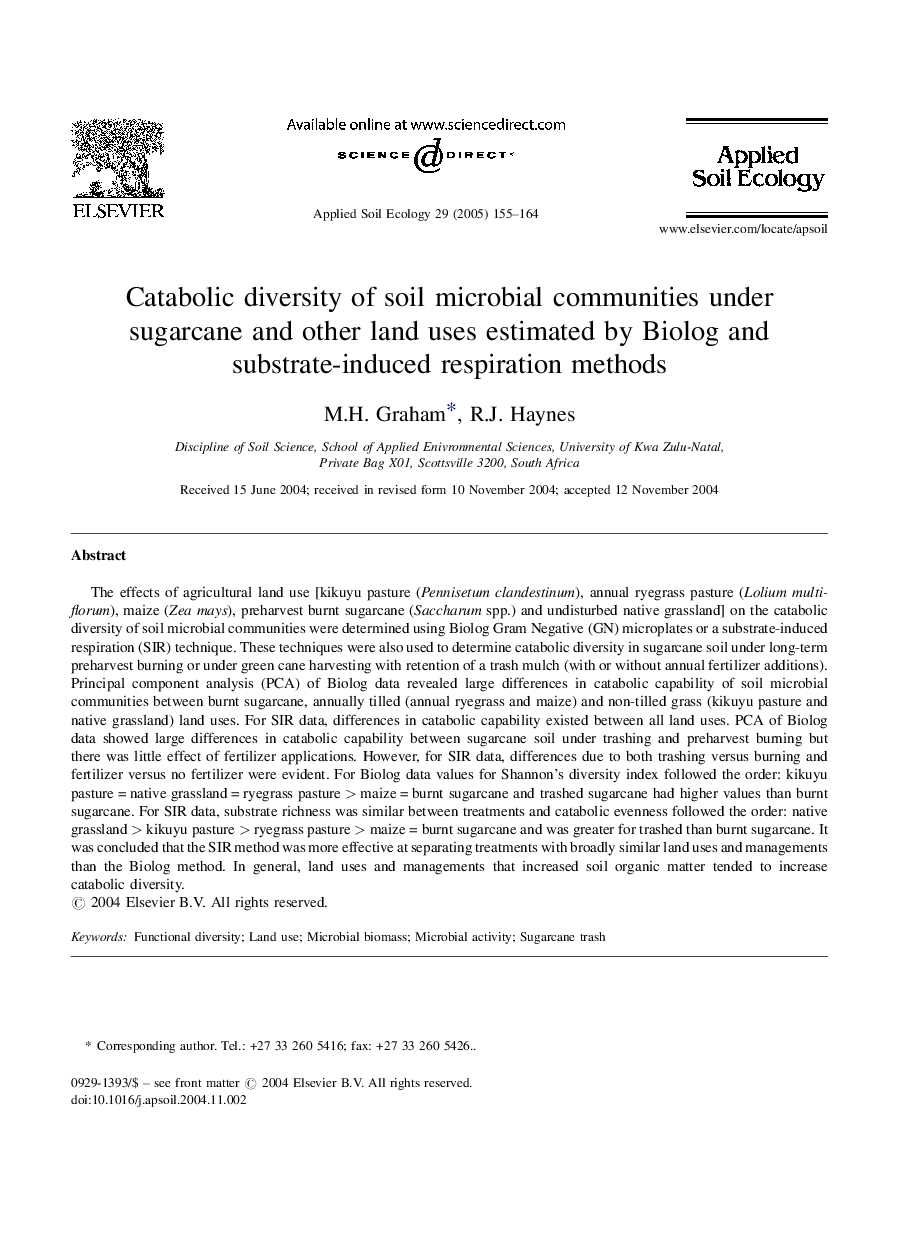| کد مقاله | کد نشریه | سال انتشار | مقاله انگلیسی | نسخه تمام متن |
|---|---|---|---|---|
| 9445216 | 1304278 | 2005 | 10 صفحه PDF | دانلود رایگان |
عنوان انگلیسی مقاله ISI
Catabolic diversity of soil microbial communities under sugarcane and other land uses estimated by Biolog and substrate-induced respiration methods
دانلود مقاله + سفارش ترجمه
دانلود مقاله ISI انگلیسی
رایگان برای ایرانیان
کلمات کلیدی
موضوعات مرتبط
علوم زیستی و بیوفناوری
علوم کشاورزی و بیولوژیک
بوم شناسی، تکامل، رفتار و سامانه شناسی
پیش نمایش صفحه اول مقاله

چکیده انگلیسی
The effects of agricultural land use [kikuyu pasture (Pennisetum clandestinum), annual ryegrass pasture (Lolium multiflorum), maize (Zea mays), preharvest burnt sugarcane (Saccharum spp.) and undisturbed native grassland] on the catabolic diversity of soil microbial communities were determined using Biolog Gram Negative (GN) microplates or a substrate-induced respiration (SIR) technique. These techniques were also used to determine catabolic diversity in sugarcane soil under long-term preharvest burning or under green cane harvesting with retention of a trash mulch (with or without annual fertilizer additions). Principal component analysis (PCA) of Biolog data revealed large differences in catabolic capability of soil microbial communities between burnt sugarcane, annually tilled (annual ryegrass and maize) and non-tilled grass (kikuyu pasture and native grassland) land uses. For SIR data, differences in catabolic capability existed between all land uses. PCA of Biolog data showed large differences in catabolic capability between sugarcane soil under trashing and preharvest burning but there was little effect of fertilizer applications. However, for SIR data, differences due to both trashing versus burning and fertilizer versus no fertilizer were evident. For Biolog data values for Shannon's diversity index followed the order: kikuyu pasture = native grassland = ryegrass pasture > maize = burnt sugarcane and trashed sugarcane had higher values than burnt sugarcane. For SIR data, substrate richness was similar between treatments and catabolic evenness followed the order: native grassland > kikuyu pasture > ryegrass pasture > maize = burnt sugarcane and was greater for trashed than burnt sugarcane. It was concluded that the SIR method was more effective at separating treatments with broadly similar land uses and managements than the Biolog method. In general, land uses and managements that increased soil organic matter tended to increase catabolic diversity.
ناشر
Database: Elsevier - ScienceDirect (ساینس دایرکت)
Journal: Applied Soil Ecology - Volume 29, Issue 2, June 2005, Pages 155-164
Journal: Applied Soil Ecology - Volume 29, Issue 2, June 2005, Pages 155-164
نویسندگان
M.H. Graham, R.J. Haynes,